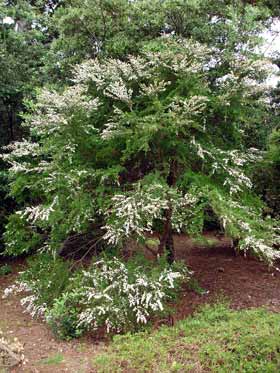Kunzea Ericoides
From Wikiwel
Other Names : Kanuka, kānuka, White tea-tree, White manuka, Burgan, Leptospermum ericoides
is a tree or shrub that is restricted to Australia and New Zealand. Until 1983, Kānuka was classified as being in the genus Leptospermum. Mānuka (Leptospermum Scoparium)and kānuka are superficially similar species and are often confused with one another. The easiest way to tell the difference between them is to feel the foliage, kānuka leaves being soft, while mānuka leaves are prickly
Special Precautions and side Effects of Kunzea Ericoides
- Don't confuse with Leptospermum Scoparium (Manuka)
- It is a strong oil and should be well diluted in a carrier oil.
- Avoid use during pregnancy.
- precaution to avoid use of the oil if it has oxidized.
Health Benefits and uses of Kunzea Ericoides
- Kanuka was used originally by the Maori people of New Zealand for pain and inflammation relief, skin diseases, and to promote calmness and sleep.
- It can be used when manufacturing anti-acne preparations, foot creams, oral hygiene products, skin and hair care preparations, preparations for prevention of body and foot odor and antibacterial preparations.
- In aromatherapy, it is credited with being an effective antibacterial, anti-fungal, and anti-inflammatory agent : Uses listed are those for Common Tea Tree): Acne, athlete's foot, candida, chicken pox, cold sores, colds, corns, cuts, flu, insect bites, itching, migraine, oily skin, ringworm, sinusitis, sores, spots, urethritis, warts, whooping cough.
- It is also useful for muscular pain relief, sprains and sports injuries.
References
- Robert Tisserand and Rodney Young, Essential Oil Safety (Second Edition. United Kingdom: Churchill Livingstone Elsevier, 2014), 316.
- Julia Lawless, The Illustrated Encyclopedia of Essential Oils (Rockport, MA: Element Books, 1995), 56-67.
